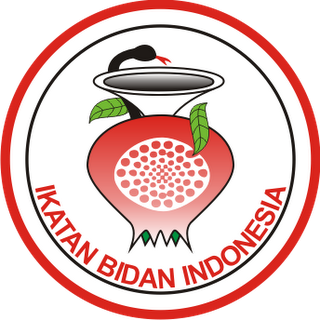Strengthening Application-Based Digital Health Literacy in The Prevention and Management of Stunting among Mothers with Children Under Five Years of Age
https://doi.org/10.33860/jbc.v7i2.4194
Keywords:
Digital Literacy, Child Nutritional Status, StuntingAbstract
Background: The rapid advancement of information technology has significantly transformed access to health information. However, the emergence of online media as a major information channel has also brought negative consequences, such as the widespread dissemination of misinformation, particularly when not accompanied by adequate digital literacy skills. This study aimed to analyze the effect of strengthening digital health literacy among mothers with children under five years of age in preventing and managing stunting. Methods: A quasi-experimental study with a two-group pre-posttest design was conducted involving 112 mothers of children under five with stunting, divided into control (n=56) and intervention (n=56) groups. Samples were selected using simple random sampling. A web-based application, Cegating, was developed and tested for usability using the System Usability Scale (SUS). Respondents’ knowledge was measured using a structured questionnaire. Data were analyzed using univariate and bivariate approaches with SPSS software. Results: The usability test of Cegating yielded a SUS score of 89.8%. In the intervention group, the mean knowledge score increased from 62.52 (pre-test) to 64.79 (post-test) (p=0.001). In the control group, the mean score increased from 60.68 to 63.30 (p=0.029). Conclusion: Strengthening digital health literacy improved mothers’ knowledge in preventing and managing stunting. The Cegating application is feasible and effective as an educational tool to enhance health education strategies for mothers with children under five to prevent and address stunting.
Downloads
References
Aghadiati, F., Ardianto, O., & Rida Wati, S. (2023). Hubungan Pengetahuan Ibu Terhadap Kejadian Stunting di Wilayah Kerja Puskesmas Suhaid. In Journal of Healthcare Technology and Medicine (Vol. 9, Issue 1). https://doi.org/10.33143/jhtm.v9i1.2793
Alkalai, Y. E. (2004). A Conceptual Framework for Survival Skills in the Digital Era. Journal of Education Multimedia and Hyoemedia 13 (1), 93-106.
Amelia, N. A. (2023). Hubungan Pola Asah, Asih, dan Asuh dengan Kejadian Stunting di Wilayah Kerja Puskesmas Lontar Surabaya. Media Gizi Kesmas, 12(1), 389–397. https://doi.org/10.20473/mgk.v12i1.2023.389-397
Beal T, et al. (2018). Review of Child Stunting Determinants In I.M.C.N.
Khairiyah Ar-Rasily, O., & Dewi, P. K. (2016). Faktor–Faktor Yang Mempengaruhi Tingkat Pengetahuan Orang Tua Mengenai Kelainan Genetik Penyebab Disabilitas Intelektual Di Kota Semarang. (Doctoral dissertation, Diponegoro University).
Kirana Rita et al. (2022). Pengaruh Media Promosi Kesehatan Terhadap Perilaku Ibu dalam Pencegahan Stuntingdi Masa Pandemi Covid-19 (Pada Anak Sekolah TK Kuncup Harapan Banjarbaru). Jurnal Inovasi Penelitian, 2(9), 2899-2906.
Lanksher C, et al, (2006). Digital Literacy and Digital Literacies Policy.
Ministry of Health Republic of Indonesia. (2022). Keputusan Menteri Kesehatan Republik Indonesia Nomor HK.01.07/MENKES/1928/2022 Tentang Pedoman Nasional Pelayanan Kedokteran Tata Laksana Stunting.
Ministry of Health Republic of Indonesia. (2024). Sosialisasi Kebijakan Intervensi Stunting Hasil Survei Status Gizi Indonesia (SSGI).
Mentari, S., & Hermansyah, A. (n.d.). Faktor-Faktor Yang Berhubungan Dengan Status Stunting Anak Usia 24-59 Bulan Di Wilayah Kerja Upk Puskesmas Siantan Hulu. http://ejournal.poltekkes-pontianak.ac.id/index.php/PNJ
Nurmaliza, N. and H. S. (2018). Hubungan Pengetahuan dan Pendidikan Ibu terhadap Status Gizi Balita, Kesmars: Jurnal Kesmas Asclepius, 1(2), 106-115. https://doi.org/10.31539/jka.v1i2.578
Setyastuti, Y. , et al. (2019). Millennial Moms: Social Media as the Preferred Source of Information about Parenting di Indonesia. Library Philosophy and Practice.
Sharah Nursa’iidah & Rokhaidah. (2022). Pendidikan, Pekerjaan dan Usia Dengan Pengetahuan Ibu Balita tentang Stunting.
Syamsoedin, W. , et al. (2015). Hubungan Durasi Penggunaan Media Sosial dengan Kejadian Insomnia pada Remaja di SMA Negeri 9 Manado. Jurnal Keperawatan, 3(1). https://doi.org/10.35790/jkp.v3i1.6691
Tim Survei Asosiasi Penyelenggara Jasa Internet Indonesia. (2019). Pertumbuhan Pengguna Internet di Indonesia. https://bskdn.kemendagri.go.id/website/apjii-jumlah-pengguna-internet-di-indonesia-tembus-171-juta-jiwa/.
Tim Survei Penetrasi Internet. (2024). Hasil Survei Penetrasi Internet di Indonesia. https://apjii.or.id/berita/d/apjii-jumlah-pengguna-internet-indonesia-tembus-221-juta-orang.
UNICEF Indonesia. (2013). Ringkasan Kajian Gizi Ibu dan Anak Oktober 2012. Akses www.unicef.org Tanggal 16 Desember 2024.
Wawan dan Dewi. (2019). Teori Pengukuran Pengetahuan, Sikap dan Perilaku Manusia. Nuha Medika.
Downloads
Published
How to Cite
Issue
Section
License
Copyright (c) 2025 Dyah Noviawati Setya Arum, Masrif, Atik Ismiyati, Sumarah, Nuning Marina Pengge, Linda Nur Wahyuni (Author)

This work is licensed under a Creative Commons Attribution-ShareAlike 4.0 International License.
Authors who publish with Jurnal Bidan Cerdas agree to the following terms:
- Authors retain copyright and grant the journal right of first publication with the work simultaneously licensed under a Creative Commons Attribution License (CC BY-SA 4.0) that allows others to share the work with an acknowledgment of the work's authorship and initial publication in this journal.
- Authors are able to enter into separate, additional contractual arrangements for the non-exclusive distribution of the journal's published version of the work (e.g., post it to an institutional repository or publish it in a book), with an acknowledgment of its initial publication in this journal.
- Authors are permitted and encouraged to post their work online (e.g., in institutional repositories or on their website) prior to and during the submission process, as it can lead to productive exchanges, as well as earlier and greater citation of published work.

This work is licensed under a Creative Commons Attribution-Share Alike 4.0 International License
You are free to:
- Share, copy and redistribute the material in any medium or format
- Adapt, remix, transform, and build upon the material for any purpose, even commercially.
- The licensor cannot revoke these freedoms as long as you follow the license terms.




